Finite Element Analysis of the Ballistic Impact on Auxetic Sandwich Composite Human Body Armor
Abstract
:1. Introduction
2. Materials and Methods
2.1. Numerical Model of Armor and Projectile
2.2. Impulse–Momentum and Kinetic Energy
2.3. Johnson–Cook Plasticity Model
2.4. Johnson–Cook Failure Model
3. Pre-Processing of the Model
4. Results and Discussion
5. Conclusions
- The analysis shows a higher energy transformation of the kinetic energy of a projectile in elastic energy occurs in auxetic structure compared with the monolithic panel due to the elastic deformation of unit cells in the auxetic core. The higher absorption capability of the auxetic structure makes it dominant over the monolithic panel.
- Deformation induced in the auxetic model is higher compared with the monolithic panel; however, this deformation does not affect the backplate. The elastic energy dissipation is higher in the auxetic structure. The auxetic structure is safe up to 400 m/s and can be used at a higher velocity, significantly reducing the threat level. At 600 m/s, the back face is damaged.
- Due to significant deformation and indentation resistance offered by the struts of the discrete unit cells of the auxetic core, the transformation of stresses is minimized and does not transmit into the back facet plate for projectiles fired at a velocity of 400 m/s.
- The monolithic panel gets damaged at a lower velocity of 200 m/s and is completely damaged at 400 m/s, showing lower resistance to indentation as compared to auxetic structures.
Author Contributions
Funding
Institutional Review Board Statement
Informed Consent Statement
Data Availability Statement
Acknowledgments
Conflicts of Interest
List of Abbreviations
| FEA | Finite Element Analysis |
| UHMWPE | Ultra-High-Molecular-Weight Polyethylene |
| SiC | Silicon Carbide |
| AH | Auxetic Honeycomb |
| NPR | Negative Poisson Ratio |
| JC | Johnson–Cook |
Symbols
| F | Impact Force |
| t | Time |
| Vi | Initial velocity |
| Vf | Final velocity |
| Edamping | Damping Energy |
| Eelastic | Elastic Energy |
| Eplastic | Plastic Energy |
| Ekinetic | Kinetic Energy |
| σy | Yield Stress |
| A | Initial Yield Stress |
| B | Strain Hardening Coefficient |
| Plastic Strain Rate | |
| Reference Strain Rate | |
| C | Reference Strain Rate Coefficient |
| m | Thermal Softening |
| D | Damage Parameter |
| T | Temperature |
| σ* | Stress Triaxiality |
References
- Ren, X.; Das, R.; Tran, P.; Ngo, T.D.; Xie, Y.M. Auxetic metamaterials and structures: A review. Smart Mater. Struct. 2018, 27, 023001. [Google Scholar] [CrossRef]
- Farokhi Nejad, A.; Alipour, R.; Shokri Rad, M.; Yazid Yahya, M.; Rahimian Koloor, S.S.; Petrů, M. Using finite element approach for crashworthiness assessment of a polymeric auxetic structure subjected to the axial loading. Polymers 2020, 12, 1312. [Google Scholar] [CrossRef] [PubMed]
- Funari, M.F.; Spadea, S.; Lonetti, P.; Lourenço, P.B. On the elastic and mixed-mode fracture properties of PVC foam. Theor. Appl. Fract. Mech. 2021, 112, 102924. [Google Scholar] [CrossRef]
- Evans, K.E.; Alderson, A. Auxetic materials: Functional materials and structures from lateral thinking! Adv. Mater. 2000, 12, 617–628. [Google Scholar] [CrossRef]
- Zochowski, P.; Bajkowski, M.; Grygoruk, R.; Magier, M.; Burian, W.; Pyka, D.; Bocian, M.; Jamroziak, K. Ballistic impact resistance of bulletproof vest inserts containing printed titanium structures. Metals 2021, 11, 225. [Google Scholar] [CrossRef]
- Greaves, G.; Greer, A.; Lakes, R.; Rouxel, T. Poisson′s ratio and modern materials (vol 10, pg 823, 2011). Nat. Mater. 2019, 18, 406. [Google Scholar] [CrossRef]
- Assidi, M.; Ganghoffer, J.-F. Composites with auxetic inclusions showing both an auxetic behavior and enhancement of their mechanical properties. Compos. Struct. 2012, 94, 2373–2382. [Google Scholar] [CrossRef]
- Rahimian Koloor, S.S.; Karimzadeh, A.; Yidris, N.; Petrů, M.; Ayatollahi, M.R.; Tamin, M.N. An energy-based concept for yielding of multidirectional FRP composite structures using a mesoscale lamina damage model. Polymers 2020, 12, 157. [Google Scholar] [CrossRef] [Green Version]
- Ha, N.S.; Lu, G. A review of recent research on bio-inspired structures and materials for energy absorption applications. Compos. Part B Eng. 2020, 181, 107496. [Google Scholar] [CrossRef]
- Prawoto, Y. Seeing auxetic materials from the mechanics point of view: A structural review on the negative Poisson’s ratio. Comput. Mater. Sci. 2012, 58, 140–153. [Google Scholar] [CrossRef]
- Alderson, A.; Alderson, K. Expanding materials and applications: Exploiting auxetic textiles. Tech. Text. Int. 2005, 777, 29–34. [Google Scholar]
- Allen, T.; Martinello, N.; Zampieri, D.; Hewage, T.; Senior, T.; Foster, L.; Alderson, A. Auxetic Foams for Sport Safety Applications. Procedia Eng. 2015, 112, 104–109. [Google Scholar] [CrossRef] [Green Version]
- Vo, N.H.; Pham, T.M.; Hao, H.; Bi, K.; Chen, W.; San Ha, N. Blast resistant enhancement of meta-panels using multiple types of resonators. Int. J. Mech. Sci. 2022, 215, 106965. [Google Scholar] [CrossRef]
- Cantwell, W.J.; Morton, J. The impact resistance of composite materials—A review. Composites 1991, 22, 347–362. [Google Scholar] [CrossRef]
- Oliveira, M.J.; Gomes, A.V.; Pimenta, A.R.; da Silva Figueiredo, A.B.-H. Alumina and low density polyethylene composite for ballistics applications. J. Mater. Res. Technol. 2021, 14, 1791–1799. [Google Scholar] [CrossRef]
- Nyanor, P.; Hamada, A.S.; Hassan, M.A.-N. Ballistic Impact Simulation of Proposed Bullet Proof Vest Made of TWIP Steel, Water and Polymer Sandwich Composite Using FE-SPH Coupled Technique. Key Eng. Mater. 2018, 786, 302–313. [Google Scholar] [CrossRef]
- Pacek, D.; Rutkowski, J. The composite structure for human body impact protection. Compos. Struct. 2021, 265, 113763. [Google Scholar] [CrossRef]
- Soydan, A.M.; Tunaboylu, B.; Elsabagh, A.G.; Sarı, A.K.; Akdeniz, R. Simulation and experimental tests of ballistic impact on composite laminate armor. Adv. Mater. Sci. Eng. 2018, 2018, 4696143. [Google Scholar] [CrossRef] [Green Version]
- Kant, S.; Verma, S.L. A review on analysis and design of bullet resistant jacket-ballistic analysis. Int. Adv. Res. J. Sci. Eng. Technol. 2017, 4, 71–80. [Google Scholar]
- Abdi, B.; Koloor, S.; Abdullah, M.; Amran, A.; Yahya, M.Y. Effect of strain-rate on flexural behavior of composite sandwich panel. In Applied Mechanics and Materials; Trans Tech Publications Ltd.: Frienbach, Switzerland, 2012; pp. 766–770. [Google Scholar]
- San Ha, N.; Lu, G.; Xiang, X. Energy absorption of a bio-inspired honeycomb sandwich panel. J. Mater. Sci. 2019, 54, 6286–6300. [Google Scholar]
- Ingrole, A.; Hao, A.; Liang, R. Design and modeling of auxetic and hybrid honeycomb structures for in-plane property enhancement. Mater. Des. 2017, 117, 72–83. [Google Scholar] [CrossRef]
- Vo, N.H.; Pham, T.M.; Bi, K.; Chen, W.; Hao, H. Stress Wave Mitigation Properties of Dual-meta Panels against Blast Loads. Int. J. Impact Eng. 2021, 154, 103877. [Google Scholar] [CrossRef]
- Imbalzano, G.; Tran, P.; Ngo, T.D.; Lee, P.V.S. A numerical study of auxetic composite panels under blast loadings. Compos. Struct. 2016, 135, 339–352. [Google Scholar] [CrossRef]
- Imbalzano, G.; Tran, P.; Ngo, T.D.; Lee, P.V. Three-dimensional modelling of auxetic sandwich panels for localised impact resistance. J. Sandw. Struct. Mater. 2017, 19, 291–316. [Google Scholar] [CrossRef]
- Imbalzano, G.; Tran, P.; Lee, P.V.; Gunasegaram, D.; Ngo, T.D. Influences of material and geometry in the performance of auxetic composite structure under blast loading. In Applied Mechanics and Materials; Trans Tech Publications Ltd.: Frienbach, Switzerland, 2016; pp. 476–481. [Google Scholar]
- Imbalzano, G.; Linforth, S.; Ngo, T.D.; Lee, P.V.S.; Tran, P. Blast resistance of auxetic and honeycomb sandwich panels: Comparisons and parametric designs. Compos. Struct. 2018, 183, 242–261. [Google Scholar] [CrossRef]
- Burlayenko, V.N.; Sadowski, T. Simulations of post-impact skin/core debond growth in sandwich plates under impulsive loading. J. Appl. Nonlinear Dyn. 2014, 3, 369–379. [Google Scholar] [CrossRef]
- Linforth, S.J. Auxetic Armour System for Protection against Soil Blast Loading. Ph.D. Thesis, The University of Melbourne, Melbourne, Australia, 2020. [Google Scholar]
- Novak, N.; Starčevič, L.; Vesenjak, M.; Ren, Z. Blast and Ballistic Loading Study of Auxetic Composite Sandwich Panels with LS-DYNA. 2019. Available online: https://www.semanticscholar.org/paper/Blast-and-ballistic-loading-study-of-auxetic-panels-Novak-Star%C4%8Devi%C4%8D/cb928c507ac0fbac28a180e6caab555201cced39 (accessed on 29 December 2021).
- Yang, S.; Qi, C.; Wang, D.; Gao, R.; Hu, H.; Shu, J. A Comparative Study of Ballistic Resistance of Sandwich Panels with Aluminum Foam and Auxetic Honeycomb Cores. Adv. Mech. Eng. 2015, 5, 589216. [Google Scholar] [CrossRef]
- Zhang, D.-N.; Shangguan, Q.-Q.; Xie, C.-J.; Liu, F. A modified Johnson–Cook model of dynamic tensile behaviors for 7075-T6 aluminum alloy. J. Alloys Compd. 2015, 619, 186–194. [Google Scholar] [CrossRef]
- Figueiredo, A.B.-H.d.S.; Lima, É.P.; Gomes, A.V.; Melo, G.B.M.d.; Monteiro, S.N.; Biasi, R.S.d. Response to ballistic impact of alumina-UHMWPE composites. Mater. Res. 2018, 21, 2–4. [Google Scholar] [CrossRef]
- Rahbek, D.B.; Simons, J.W.; Johnsen, B.B.; Kobayashi, T.; Shockey, D.A. Effect of composite covering on ballistic fracture damage development in ceramic plates. Int. J. Impact Eng. 2017, 99, 58–68. [Google Scholar] [CrossRef] [Green Version]
- Yamini, S.; Young, R.J. The mechanical properties of epoxy resins. J. Mater. Sci. 1980, 15, 1823–1831. [Google Scholar] [CrossRef]
- Wang, X.; Shi, J. Validation of Johnson-Cook plasticity and damage model using impact experiment. Int. J. Impact Eng. 2013, 60, 67–75. [Google Scholar] [CrossRef]
- Koloor, S.; Tamin, M. Effects of lamina damages on flexural stiffness of CFRP composites. In Proceedings of the 8th Asian-Australasian Conference on Composite Materials, Kuala Lumpur, Malaysia, 6–8 November 2012. [Google Scholar]
- Zhang, Y.; Outeiro, J.; Mabrouki, T. On the selection of Johnson-Cook constitutive model parameters for Ti-6Al-4 V using three types of numerical models of orthogonal cutting. Procedia Cirp 2015, 31, 112–117. [Google Scholar] [CrossRef]
- Johnson, G.R.; Cook, W.H. Fracture characteristics of three metals subjected to various strains, strain rates, temperatures and pressures. Eng. Fract. Mech. 1985, 21, 31–48. [Google Scholar] [CrossRef]
- Johnson, G.R. A constitutive model and data for materials subjected to large strains, high strain rates, and high temperatures. In Proceedings of the 7th International Symposium of Ballistics, The Hague, The Netherlands, 19–21 April 1983; pp. 541–547. [Google Scholar]
- Brar, N.; Joshi, V.; Harris, B. Constitutive model constants for Al7075-t651 and Al7075-t6. In Aip Conference Proceedings; American Institute of Physics: University Park, MD, USA, 2009; pp. 945–948. [Google Scholar]
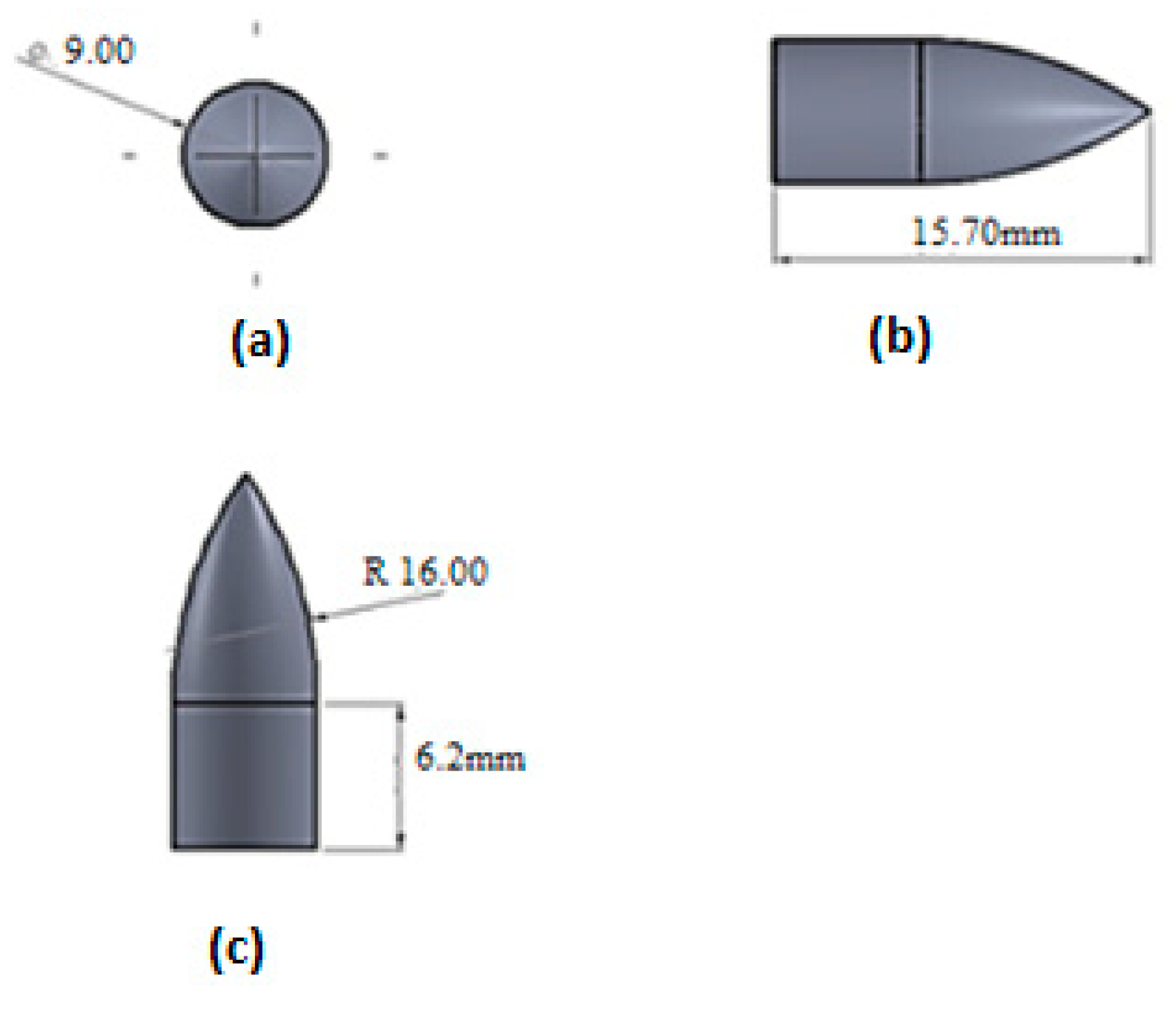
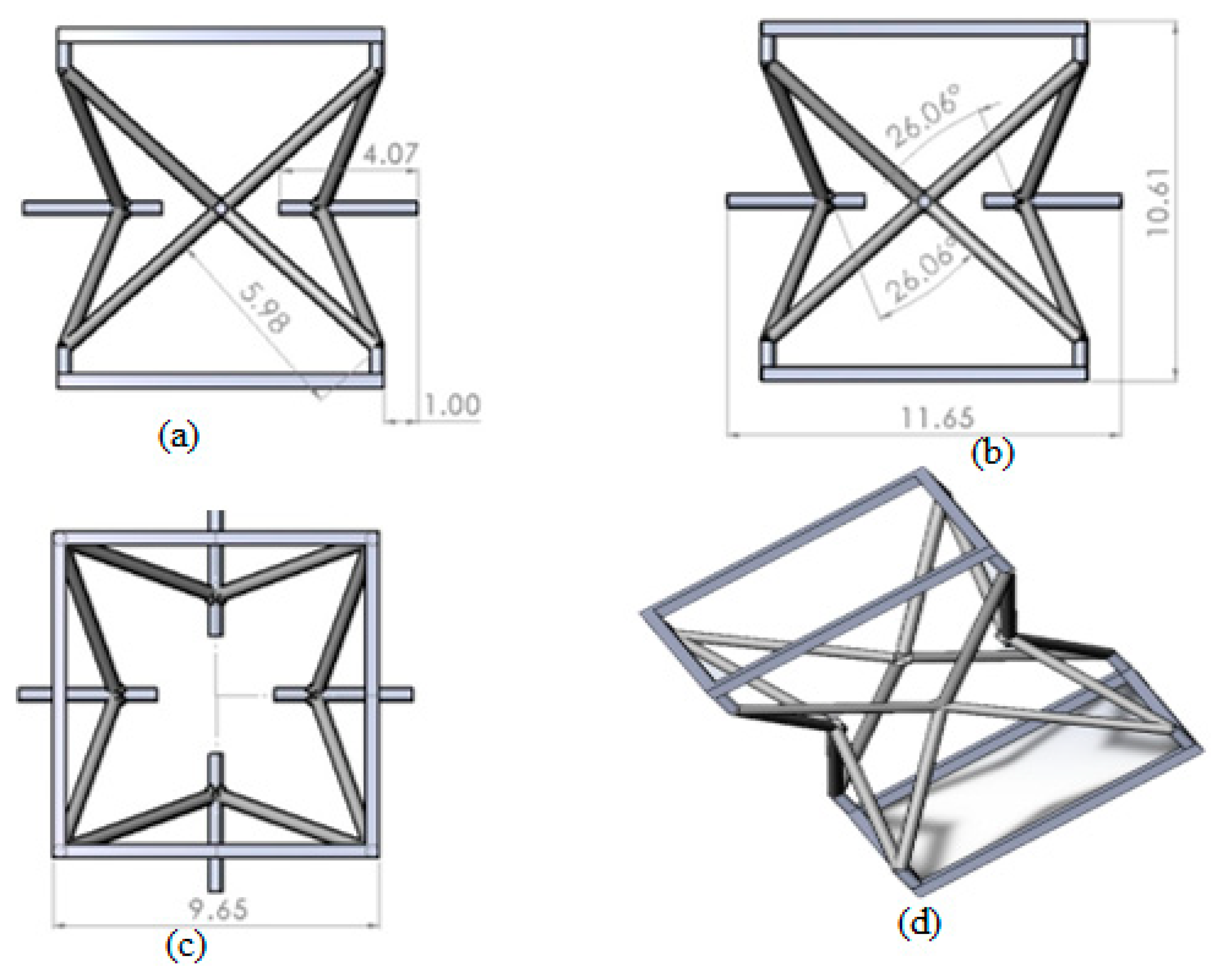


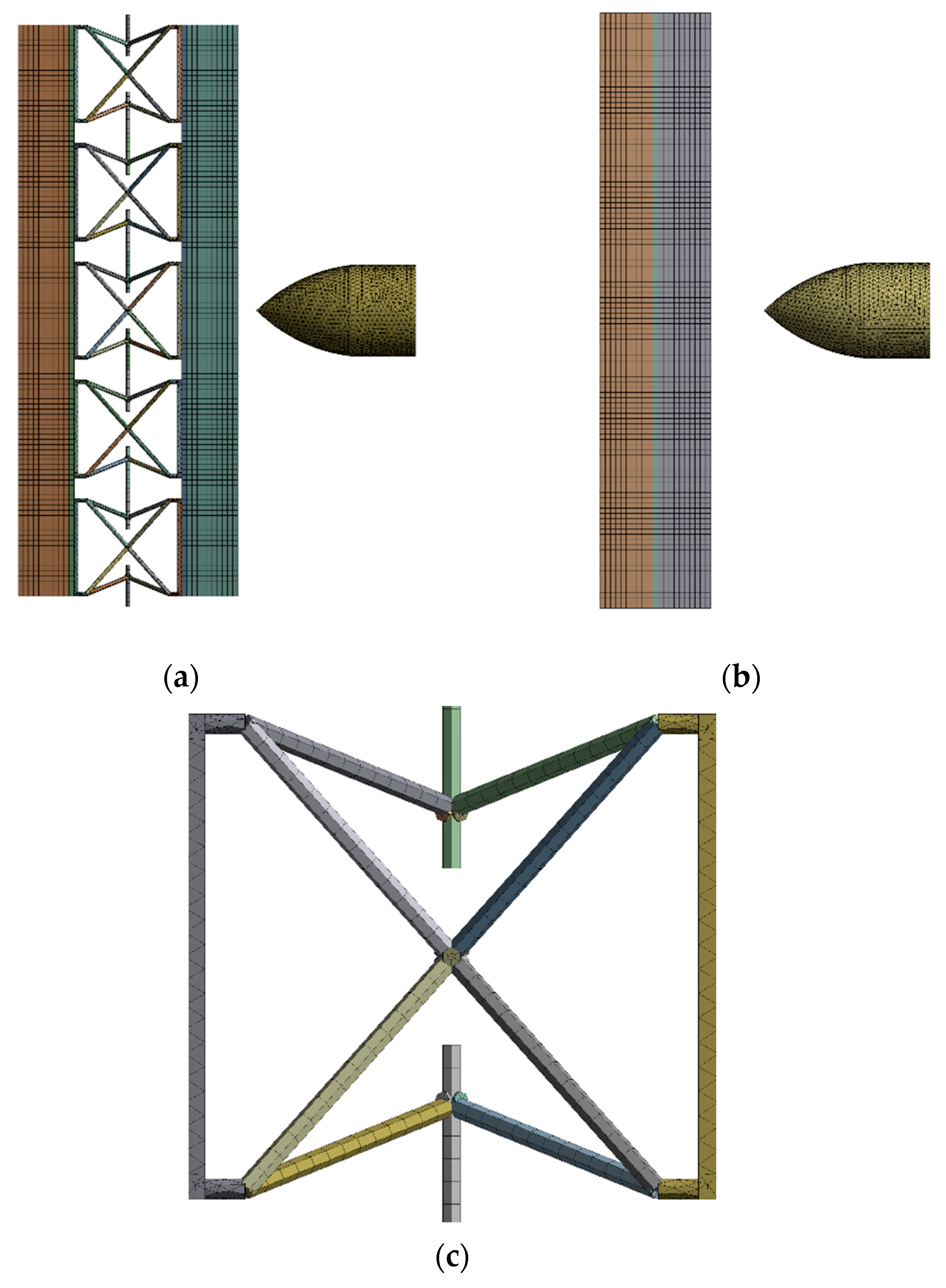



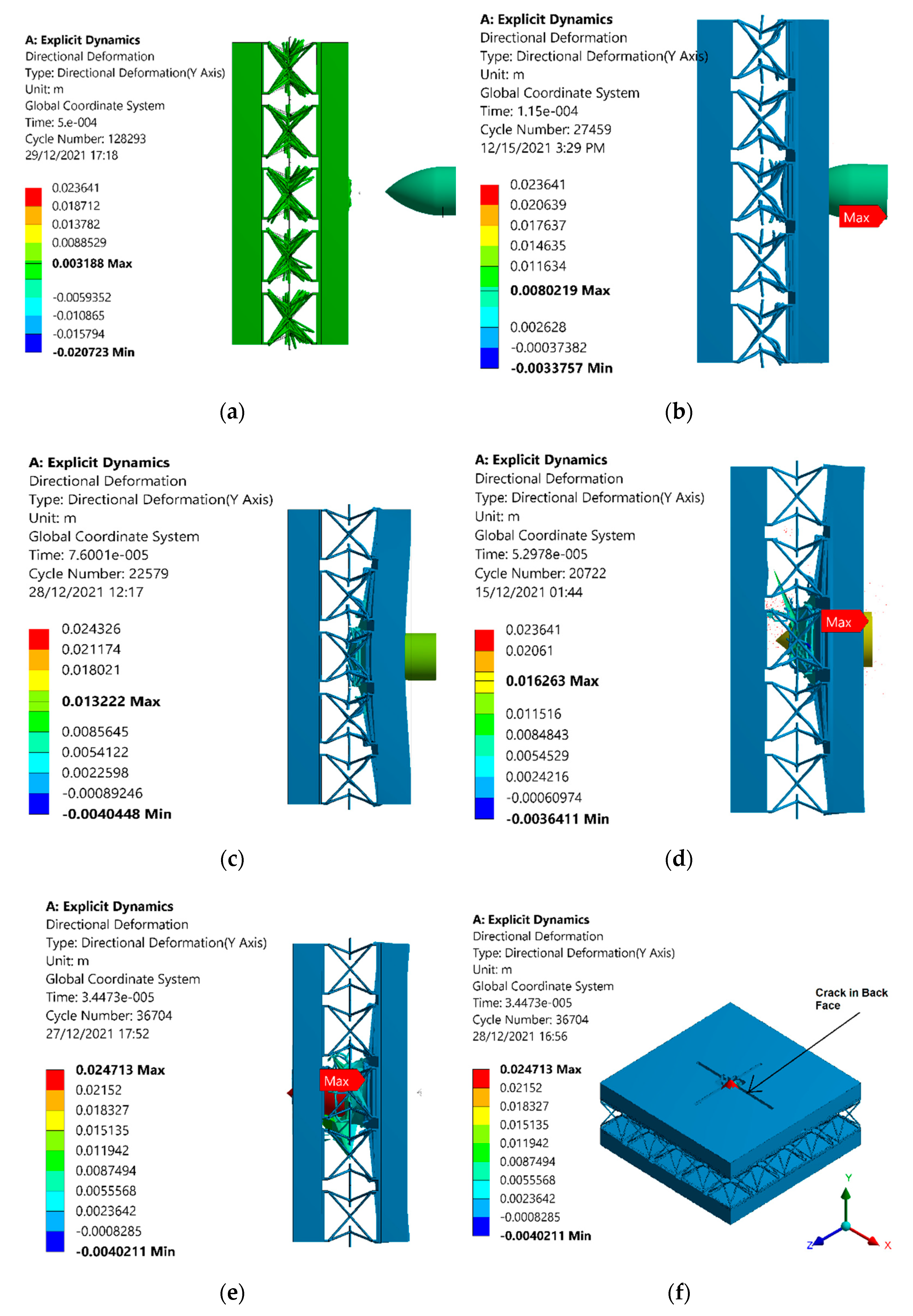
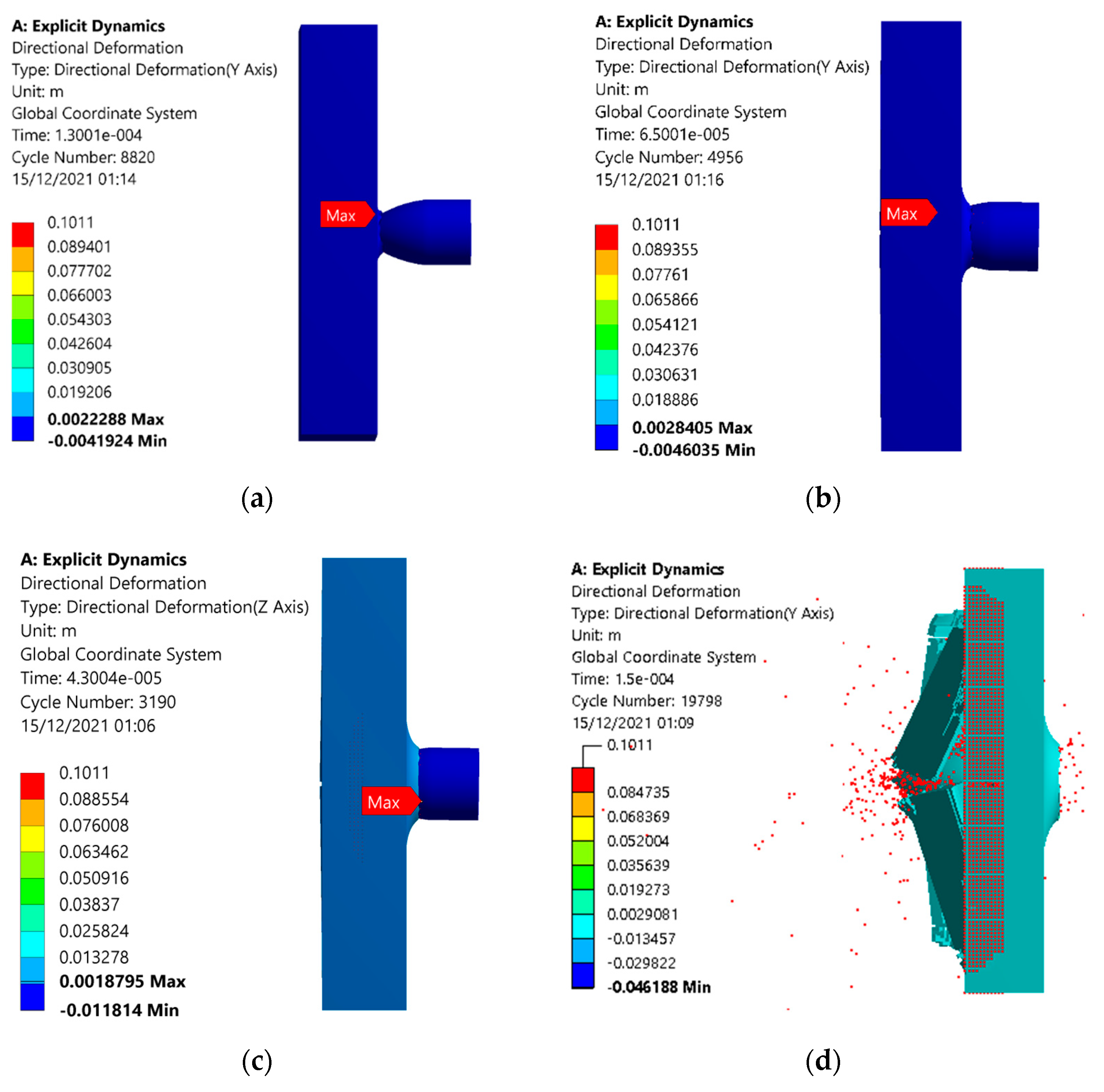
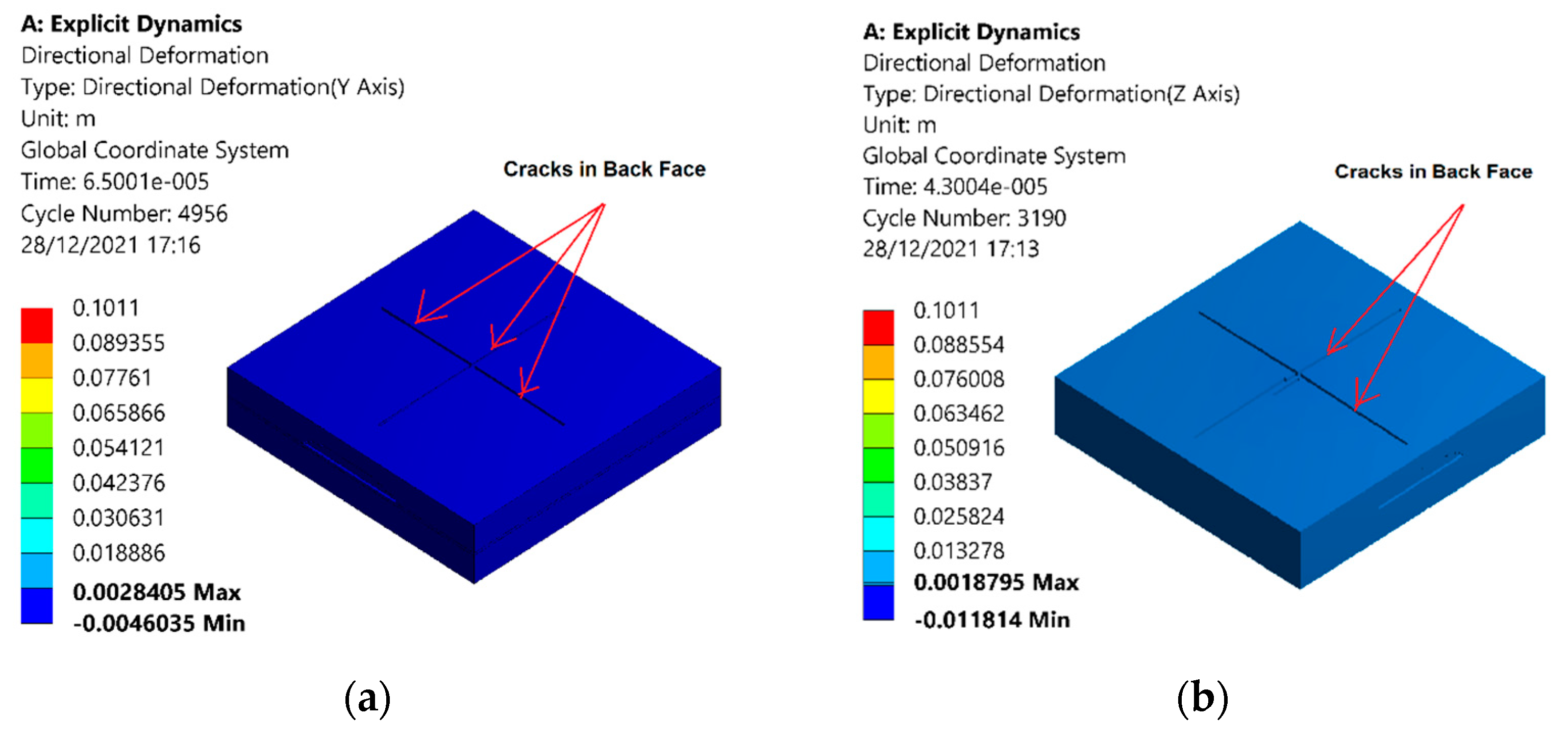
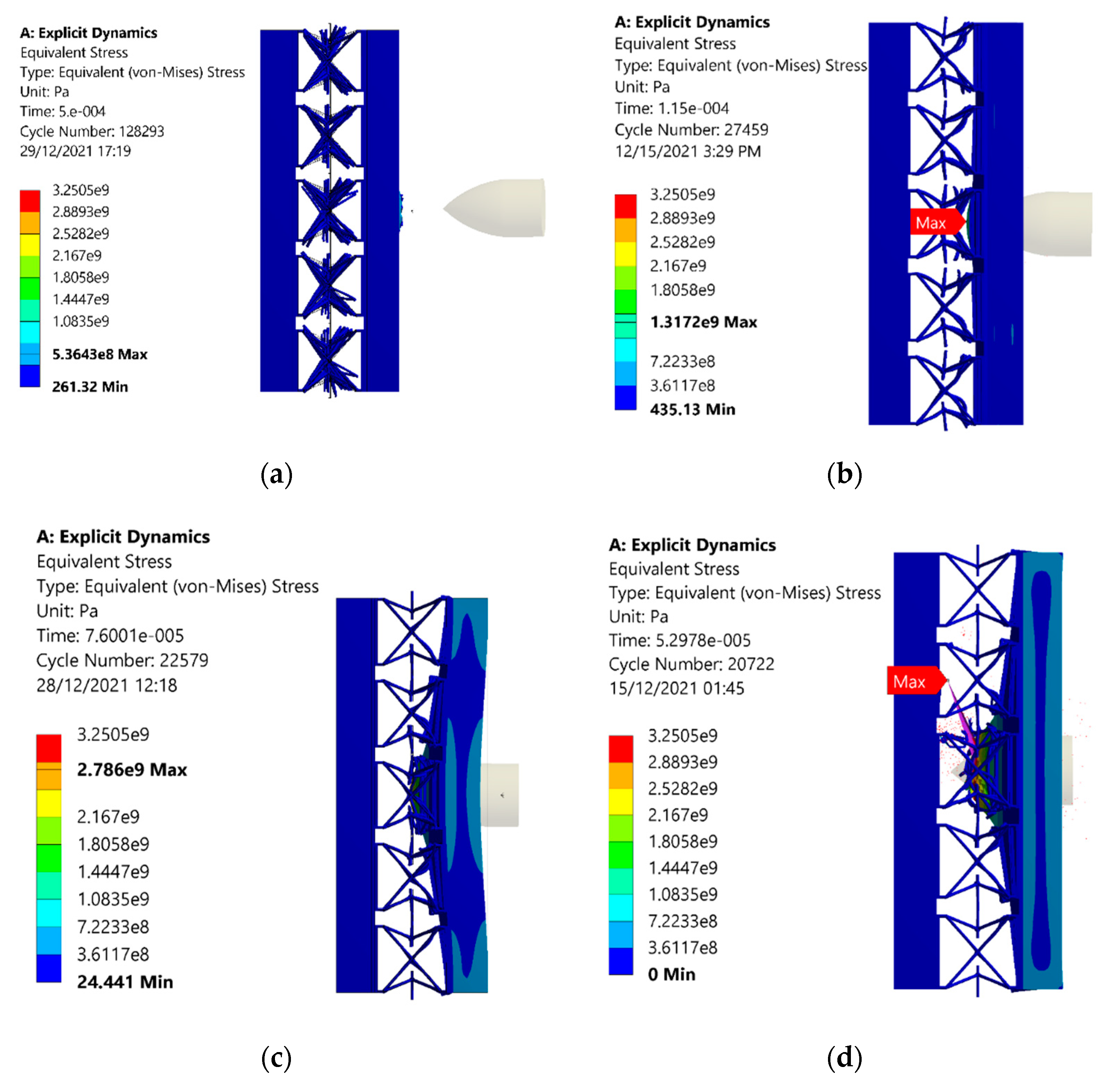


| Sr. No. | Material | Property | Value | Unit |
|---|---|---|---|---|
| 1 | Aluminum alloy (Al 7075-T6) [32] | Density | 2804 | kg/m3 |
| Specific Heat, C | 848 | J/kg °C | ||
| Shear Modulus | 2.67 × 1010 | Pa | ||
| 2 | UHMWPE [33] | Density | 915 | kg/m3 |
| Shear Modulus | 1.7 × 108 | Pa | ||
| 3 | SiC [34] | Density | 3215 | kg/m3 |
| Specific Heat, C | 510 | J/kg °C | ||
| Shear Modulus | 1.935 × 1011 | Pa | ||
| Bulk Modulus | 2.2 × 1011 | Pa | ||
| 4 | Epoxy resin [35] | Density | 1186 | kg/m3 |
| Shear Modulus | 2.1 × 109 | Pa |
| Johnson–Cook Strength Model | |||
|---|---|---|---|
| Sr. No. | Property | Value | Unit |
| 1 | Strain Rate Correlation | First-Order | |
| 2 | Initial Yield Stress | 5.46 × 108 | Pa |
| 3 | Hardening Constant | 6.78 × 108 | Pa |
| 4 | Hardening Exponent | 0.71 | |
| 5 | Strain Rate Constant | 0.024 | |
| 6 | Thermal Softening Exponent | 1.56 | |
| 7 | Melting Temperature | 893 | K |
| 8 | Reference Strain Rate (/sec) | 0.0005 | |
| Sr. No. | Property | Value |
|---|---|---|
| 1 | Damage Constant D1 | −0.068 |
| 2 | Damage Constant D2 | 0.451 |
| 3 | Damage Constant D3 | −0.952 |
| 4 | Damage Constant D4 | 0.036 |
| 5 | Damage Constant D5 | 0.697 |
| 6 | Melting Temperature | 893 K |
| 7 | Reference Strain Rate (/sec) | 1 |
| Test No | No of Elements | Equivalent Stress, Pa |
|---|---|---|
| 1 | 249,342 | 6.12 × 108 |
| 2 | 316,473 | 1.01 × 109 |
| 3 | 358,952 | 1.15 × 109 |
| 4 | 404,591 | 1.27 × 109 |
| 5 | 463,835 | 1.32 × 109 |
| 6 | 524,795 | 1.32 × 109 |
Publisher’s Note: MDPI stays neutral with regard to jurisdictional claims in published maps and institutional affiliations. |
© 2022 by the authors. Licensee MDPI, Basel, Switzerland. This article is an open access article distributed under the terms and conditions of the Creative Commons Attribution (CC BY) license (https://creativecommons.org/licenses/by/4.0/).
Share and Cite
Shah, I.A.; Khan, R.; Koloor, S.S.R.; Petrů, M.; Badshah, S.; Ahmad, S.; Amjad, M. Finite Element Analysis of the Ballistic Impact on Auxetic Sandwich Composite Human Body Armor. Materials 2022, 15, 2064. https://doi.org/10.3390/ma15062064
Shah IA, Khan R, Koloor SSR, Petrů M, Badshah S, Ahmad S, Amjad M. Finite Element Analysis of the Ballistic Impact on Auxetic Sandwich Composite Human Body Armor. Materials. 2022; 15(6):2064. https://doi.org/10.3390/ma15062064
Chicago/Turabian StyleShah, Imtiaz Alam, Rafiullah Khan, Seyed Saeid Rahimian Koloor, Michal Petrů, Saeed Badshah, Sajjad Ahmad, and Muhammad Amjad. 2022. "Finite Element Analysis of the Ballistic Impact on Auxetic Sandwich Composite Human Body Armor" Materials 15, no. 6: 2064. https://doi.org/10.3390/ma15062064







